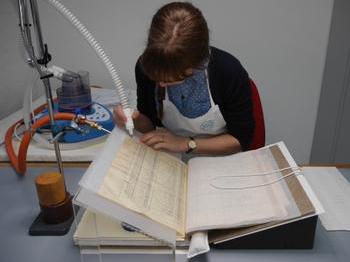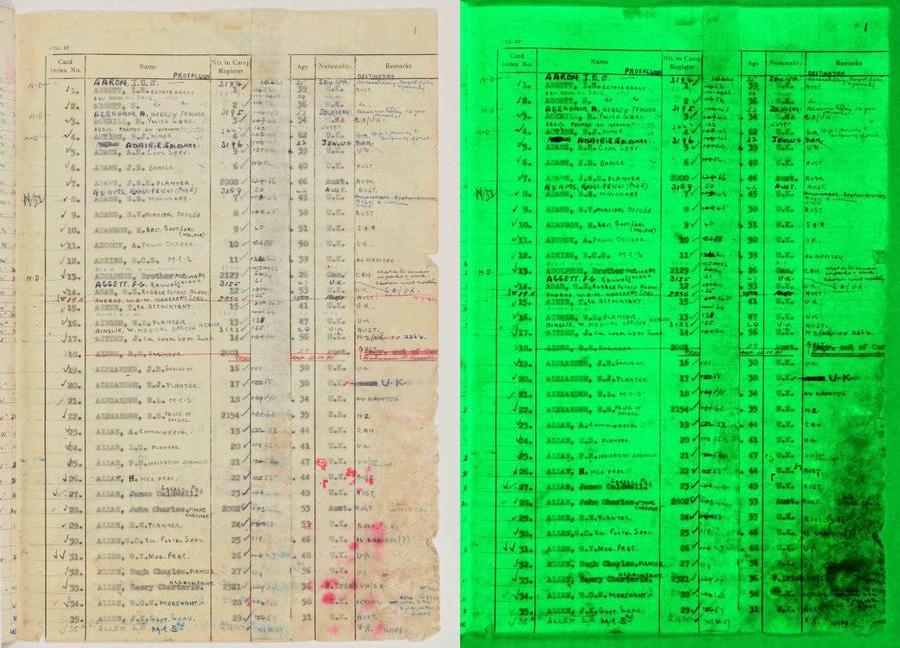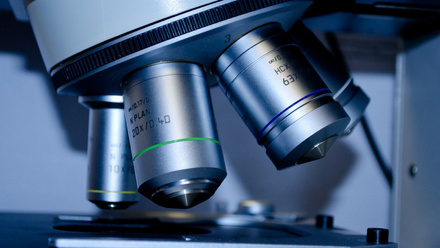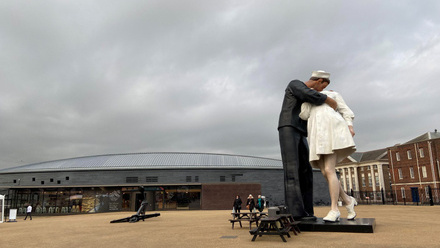The conservation research and treatment of a WWII Nominal Roll
Emma Nichols writes:
In May 2016 I was awarded a Research Bursary by the Wellcome Trust which enabled me to carry out an exciting project investigating and treating an extensively damaged Nominal Roll. The Roll, owned by the Royal Commonwealth Society, belongs to the Voices of Civilian Internment: WWII Singapore Archive at Cambridge University Library. The Archive was undergoing conservation for digitisation, for which I was the project conservator, when I was awarded the bursary.

Compiled and bound in the 1940s by civilian internees held by the Japanese, the Nominal Roll was created as a working volume by people living in terrible conditions and under extreme stress who were desperate to record their personal details, situation and treatment. The internees hailed from twenty different countries and survivors of internment rarely spoke of their traumatic ordeal. As a result the Archive, and in particular the Nominal Roll, are of international importance and interest to the families of internees, academics, students and the general public.
Made with the limited facilities and resources available, the Roll was handwritten and composed of poor quality, second-hand 20th century materials. At some point the Roll suffered extensive moisture damage resulting in the loss of paper and text, and the bleeding of inks, leaving what remained very weak and at high risk of further damage from handling. It was required that the Roll be digitised along with the larger Archive to enable it to be accessed by a global audience.
The research project had two main threads. The first was the analysis of the paper and its moisture damage. A major part of this was carried out in collaboration with PhD student Natalie Brown at the Institute for Sustainable Heritage at University College London. Thanks, to Natalie, non-destructive analysis and characterisation tests were carried out on the Nominal Roll’s paper fibres and damaged areas using a Keyence VHX 5000 digital microscope and SurveNIR, a near-infrared spectroscopy system which was developed to analyse the chemical and physical properties of paper.

Further testing was carried out at Cambridge University Library with the assistance of photographers in the Digital Content Unit using UV imaging equipment purchased with money from the bursary. The UV images enabled the human eye to see the parameters of the moisture and mould damage to the paper. The larger UV images were supplemented with smaller ones of greater detail using a small handheld microscope called a DinoLite. All of the information gathered from the microscopes, near infra-red spectroscopy and UV imaging gave a clearer idea about the characteristics of the paper and extent of its damage.
The second thread of the research project was the development and application of a sympathetic conservation treatment which would stabilise the paper and ink and minimise the risk of further loss. The results of the analysis and UV imaging provided a better understanding of the material composition and current condition of the Roll, information which was crucial in the formulation of an evidence based, sustainable treatment.
A major challenge in the design of a conservation treatment was the bound format of the Roll. A review of existing conservation literature discovered many routinely practised treatments for mould and moisture damaged paper rely on the overall treatment of separate leaves. It was impossible to dismantle the binding without removing original structural elements and therefore losing crucial information about its construction. To align with current conservation ethics, it was decided the conservation of the leaves needed to be carried out in-situ. After extensive testing, the paper leaves of the Roll were stabilised and repaired using an airborne aerosol adhesive and conservation repair tissues.
The Roll was successfully conserved in a way that preserves its original functionality and ensures its longevity. The Roll, like the rest of the Archive, went safely through digitisation and has now been shared with open access on Cambridge Digital Library. The success of the project means the voices of the internees are able to continue to serve as a humbling reminder of human resilience.




